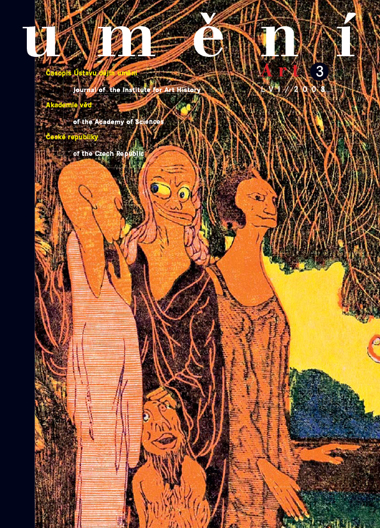Mahulena Nešlehová
K objevu Kubištových malířských skic z Florencie
Four landscape sketches by the painter Bohumil Kubišta (1884-1918), a leading figure in the Czech early 20th-century avant-garde, surfaced in the art market and drew exceptional attention. The landscapes are small studies, superbly rendered in oil colours, and created by the artist in 1907, while he was studying in Florence. All of them were marked with a title and date on the reverse and a discernible signature on the front. The paintings' themes are from the local urban landscape, which Kubišta eagerly devoted time to exploring. Two sketches capture the natural course of the unregulated Arno River (Arno, 07; Arno, 10. 2. 07), another depicts a villa in Fiesole submerged in greenery (Villa di Fiesole, 07), and the fourth, Marina di Pisa, catches the gloomy winter atmosphere of a harbour basin, rimmed in the background by industrial structures. Three of these sketches were acquired by the Gallery of Modern Art in Hradec Králové, and one is kept in a private collection. The authenticity of the discovered works was confirmed beyond a doubt by restoration and technique experts in the studio of the National Gallery in Prague. In addition to the composition and the age of the colours used in the sketches, another important factor testifying to their genuineness is the cheap binder that the painter was mixing into his paints at that time. It was also found in samples of the colours used in the painting Promenáda u Arna (Promenade along the Arno River), 1907, Gallery of West Bohemia in Pilsen, which is proved to have originated in Florence. The same composition of colours, and the same type of binder used, was also confirmed in an expert opinion on the painting Na trhu (At the Market), 1907, which belongs in the same series of works. Despite the free style of painting in the sketch, colouristically they correspond more to the preceding, impressionist stage in Kubišta's work, their significance lying in the surety and skill with which the artist was able to express the fundamental essence of the place. They draw our attention to his interest in light and colour in relation to form and space, and to his feeling for the structural qualities of an image, a sense he cultivated while in Italy. These works are thus important additions to the pieces of art he created in Florence, but they also significantly enrich our knowledge about his early work.
Full-text in the Digital Library of the Czech Academy of Sciences:
https://kramerius.lib.cas.cz/uuid/uuid:704fd99b-47b2-9b02-3b18-a95c8a8a2ab1
< back

